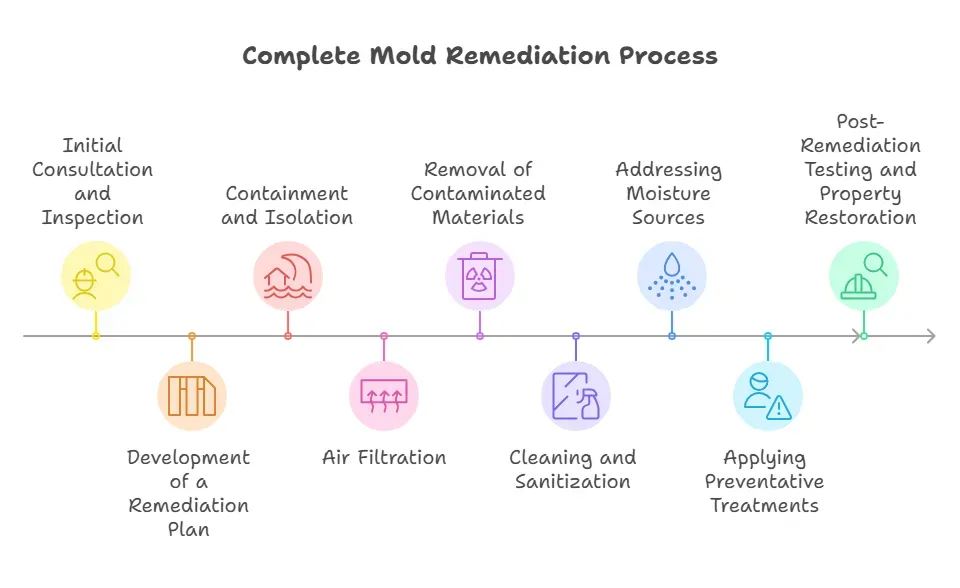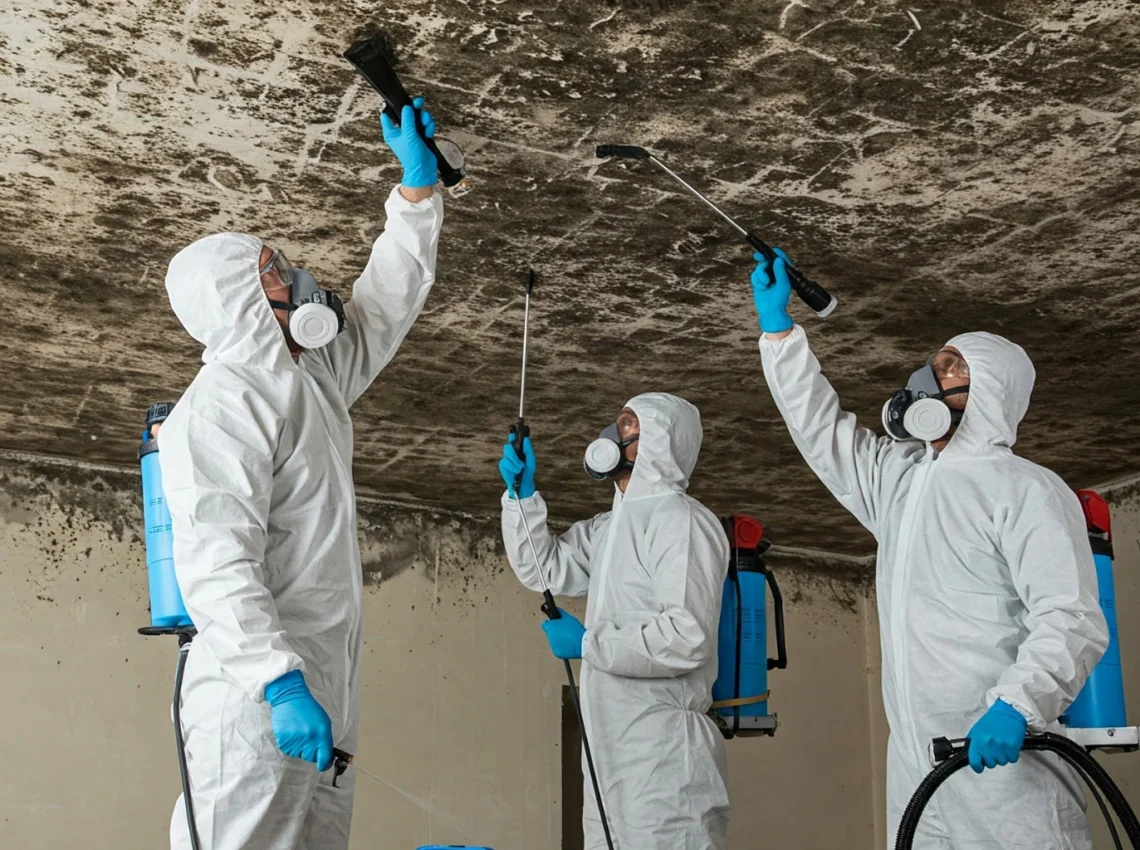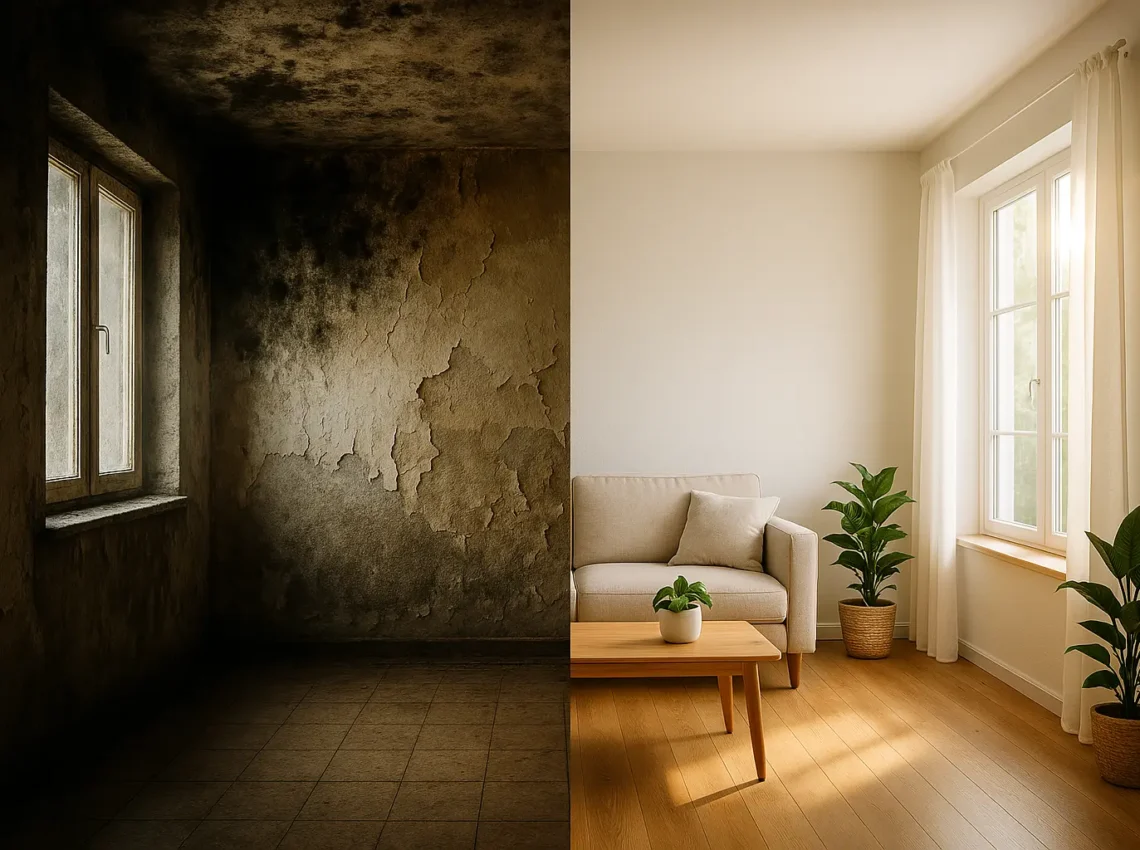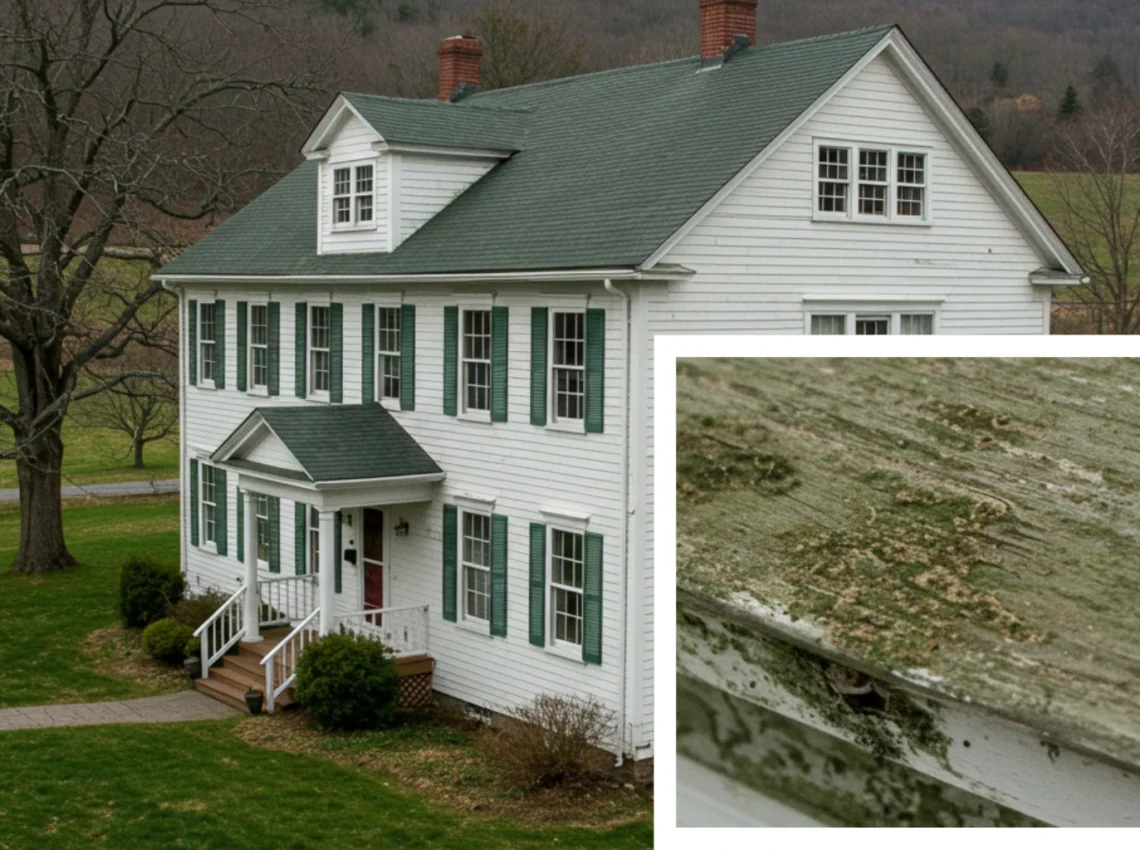What Is Mold Remediation Process? The Guide You Need as a Homeowner
Are you noticing musty odors or mysterious dark spots in your home? You might be facing a mold problem that requires professional attention. As a certified mold specialist with over a decade of experience, we have seen how certain climate conditions create perfect environments for mold growth – and how proper remediation can protect both your family’s health and your property value.
What is the Mold Remediation Process?
Mold remediation is a multi-step process aimed at safely removing mold and addressing the underlying causes of its growth, ensuring a healthy and safe environment.
Unlike simple mold removal, the mold remediation process addresses the root causes of mold growth and follows established protocols to permanently solve the problem. The process is designed not to merely eliminate visible mold but to return indoor environments to a normal, healthy state by addressing contamination at its source.
The Complete Mold Remediation Process Explained

Professional mold remediation process follows a systematic approach that includes these essential steps:
Initial Consultation and Inspection
The mold remediation process begins with a thorough mold assessment of your property. Certified professionals will inspect visible mold, test air quality if necessary, and use specialized equipment like moisture meters and thermal imaging cameras to detect hidden mold behind walls or under floors.
Development of a Remediation Plan
Based on the mold inspection findings, specialists will create a detailed plan outlining the extent of contamination, necessary containment measures, cleaning methods, and steps to address underlying moisture issues.
Containment and Isolation
Before remediation begins, the affected areas must be properly contained to prevent cross-contamination. This typically involves:
- Setting up physical barriers with polyethylene sheeting
- Creating negative air pressure environments with HEPA-filtered air scrubbers
- Establishing clean rooms and decontamination chambers for larger projects
Air Filtration
Commercial-grade HEPA air filtration devices are deployed to capture airborne mold spores released during the cleaning process, significantly reducing the risk of spreading contaminants to unaffected areas.
Removal of Contaminated Materials
Depending on the severity of infestation and type of material affected:
- Porous materials with extensive growth (drywall, carpeting, insulation) are often removed and properly disposed of
- Semi-porous materials may be cleaned using specialized techniques
- Non-porous surfaces are treated with EPA-registered antimicrobial solutions
Cleaning and Sanitization
All salvageable items and surfaces undergo thorough cleaning using specialized techniques:
- HEPA vacuuming to remove surface mold spores
- Damp wiping with antimicrobial agents
- Specialized treatments like soda blasting for wooden structural components
Addressing Moisture Sources
Perhaps the most critical step is identifying and resolving the underlying moisture issues that enabled mold growth in the first place. This may involve:
- Repairing plumbing leaks
- Improving ventilation in high-humidity areas
- Installing dehumidification systems
- Correcting drainage or foundation issues
- Addressing roof or building envelope problems
Applying Preventative Treatments
After cleaning, professionals often apply mold-inhibiting coatings or sealants to treated surfaces, providing additional protection against future growth.
Post-Remediation Testing and Property Restoration
Following remediation, we recommend that a licensed Mold Assessor conduct post-remediation testing to confirm that air quality meets safety standards. If necessary, our team can assist with property reconstruction, including drywall replacement and hard duct cleaning, to fully restore your space. This may include:
- Moisture readings to confirm proper drying
- Post-remediation air quality testing when necessary
- Documentation of completed work for homeowner records
Our professional approach includes thorough inspection, containment of affected areas, removal of contaminated materials, sanitization of salvageable items, elimination of moisture sources, and implementation of preventative measures.
While many homeowners attempt DIY mold removal, most don’t realize that the true mold remediation process involves much more than simply cleaning visible mold. Let me walk you through what professional mold remediation actually entails and why it matters for your home and family.
Why Choose A Professional To do The Mold Remediation Process than DIY
While DIY mold removal might seem cost-effective initially, it often falls short for several reasons:
- Limited Scope: Homeowners typically only address visible mold, missing hidden growth behind walls or under flooring.
- Inadequate Equipment: Consumer-grade cleaning products and equipment cannot match the effectiveness of professional-grade antimicrobial agents and HEPA filtration systems.
- Cross-Contamination Risk: Without proper containment, DIY cleaning can actually spread mold spores throughout the home, potentially worsening the situation.
- Recurring Issues: Without identifying and addressing the underlying moisture source, mold will simply return, often within weeks.
- Safety Concerns: Improper handling of mold can release massive amounts of spores, potentially causing health reactions in sensitive individuals.
Health Risks and Property Value – Why Professional Mold Remediation Process Matters
Professional mold remediation process provides documentation that the issue was properly addressed, protecting your investment and ensuring peace of mind.

Choosing a Qualified Mold Remediation Provider
Not all remediation companies offer the same level of service. When selecting a provider, look for:
- Industry certifications from organizations like the Institute of Inspection, Cleaning and Restoration Certification (IICRC) or the National Organization of Remediators and Mold Inspectors (NORMI)
- Experience with your specific housing type and climate conditions
- Comprehensive assessment processes that include moisture source identification
- Clear, detailed remediation plans and transparent pricing
- Proper insurance and licensing
- Most importantly, the products they use are non-chemical. We pride ourselves in offering such service to our clients.
Taking Action Against Mold – Your Next Steps
Addressing mold issues promptly saves both money and health complications in the long run. If you suspect mold in your home, don’t wait until the problem worsens.
The remediation process isn’t just about removing visible mold – it’s about creating a healthier living environment and protecting your property investment.
Contact us for a certified mold remediation professional today for an assessment of your home. Your family deserves to breathe clean air in a healthy environment free from the dangers of uncontrolled mold growth.


